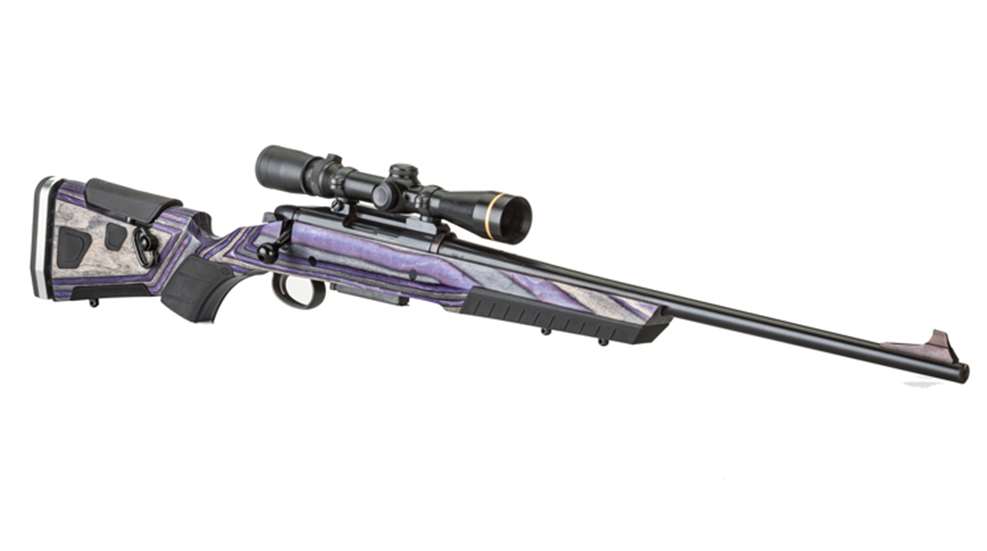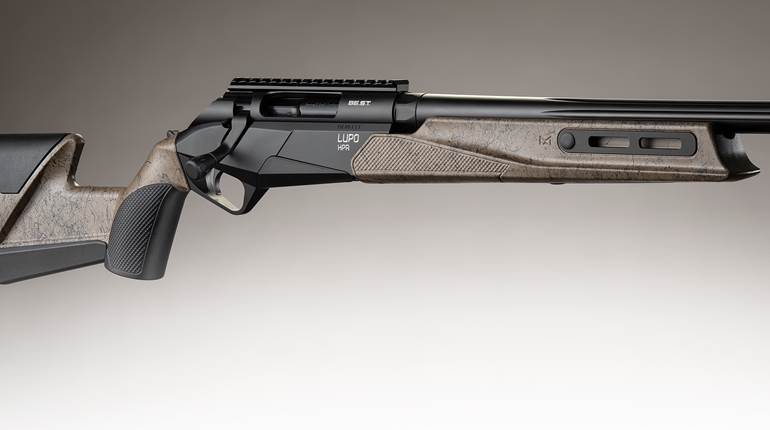
What to do with a rifle that’s never lived up to expectations? That’s a question I faced with my Remington 788, a 1970s-era bolt-action whose exceptionally fast locktime earned it a cult following among benchrest competitors and accuracy cranks. Those guys, however, were really just enamored with the 788 action, which they’d subsequently build into a custom rifle. That was my vague intention upon finding a well-preserved specimen for under $300 at a gun show, but one I never was able to afford. And so a light clicked on as soon as I saw Boyds’ new line of “drop-in” At-One replacement stocks. The 788 was one of many models listed, and presumably I could make the switch DIY.
While far short of a full-on custom job, installing an At-One stock accomplished three things:
1. Shooting comfort. The 788’s factory stock was shorter than I like and had too much drop for a low-mounted scope. Steadying into the sight picture was more difficult than it should have been and I was overly recoil-aware, even though my gun is chambered in the mild 6 mm Rem. Since the At-One is built like a match-rifle stock with telescoping cheekpiece and buttpad sections, it fits like a glove. With 9/16”of adjustment at the comb and 1½” at the butt, few shooters won’t be able to snug into a perfect union. The push-button controls make it simple to change dimensions, and the stainless steel adjustment structure is rock-solid. The At-One’s black elastomer grip panels have a chunky feel that may take getting used to, but which may also enhance the shooter’s sense of control. Another plus comes from multiple sling attachments, including studs fore and aft, as well as a single-point swivel that can be deployed on either side.
2. Dynamic looks. Granted, looks are subjective, but the economical 788 was given a lumpy factory birchwood stock. I’ve seen a few whose wood has some figure, but mine was nearly as bland as a piece of drywall. Regardless of anything else, no one can call the At-One’s looks bland. Unlike most drop-in replacements fashioned from synthetic material, this stock is made from laminated wood, which incorporates a sheaf of layers bonded together via a combination of adhesives, pressure and heat. Adjacent pieces are different shades, so a striped effect emerges. At-One stocks include the brown, gray and black hues typical in gunstock laminations, but also present brighter colors. In fact there are 11 different color patterns—blue, green, pink, yellow, a pair of reds, along with muted options in brown/tan and gray/black.
Mine, the Royal, features a deep purple. While it doesn’t surpass my personal yen for high-grade walnut, I can roll with what is definitely a more contemporary vibe. It would be pretty boring if all our guns looked the same, and the At-Ones are no more boring than they are bland.
3. Durability. I bet 788 owners rarely lost sleep about scratching or dinging their factory stocks, and in fact the birch Remington used is pretty tough. But nowhere near as tough as a high-grade lamination, which in this case, according to Boyds, is 100 percent hardwood and incorporates maple veneers. Though I imagine with enough force its surface can be scratched, I’m also confident it will deflect far more punishment than any walnut-stocked rifle. Further, laminate models will not absorb moisture (rain, humidity, dunking in the river, etc.)—and therefore change zero—the way traditional wood stocks do. And as mentioned previously, Boyds’ Bring-It adjustment mechanism allows shooters to fine-tune the fit using extremely stout spring-loaded releases. There are no threaded dials or knobs to work free and no tools are required.
Some of the best composite stocks may be close, but none are more durable than a quality laminate. 
All this for $189 (plus shipping) when purchased through Boyds website. My installation literally proved to be a simple drop-in where the engagement surfaces fit to form and the barrel was free-floating, as desired. The maker does caution however that some guns may need “minor fitting” and that a qualified gunsmith should do the job.
Considering how stocks must be inletted to match up with a specific firearm model, it is amazing to see the variety of At-One variants Boyds offers. On the company website, I counted 230 unique models from 53 different brands/makers, and that doesn’t account for multiple action lengths and styles on some, including left-handed stocks. There are few bolt-gun models that aren’t covered, and I was especially impressed with the extensive listing of military Mausers, various Springfields, and obscure private-label runs, plus a handful of bolt-action shotguns.
My first shooting session with the old 788 in its new housing was promising and comfortable as hoped. But it’s too soon to make a blanket statement that the gun shoots better now than before, a comparison that should be even more evident from field positions than from a benchrest. The 788s were once regarded as highly accurate for the money, and so I’m hopeful that a modest investment in a snazzy new stock will help mine reach its potential.





































